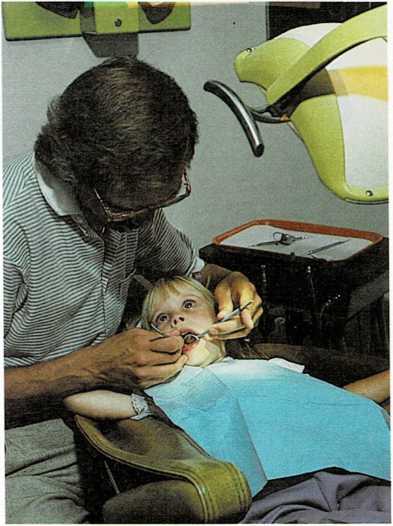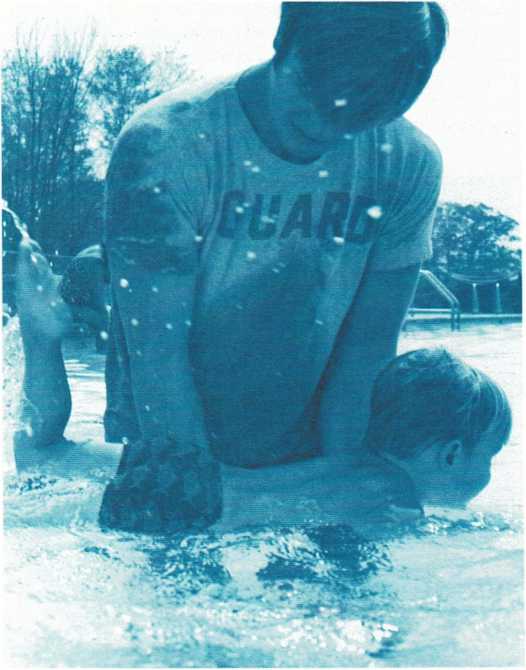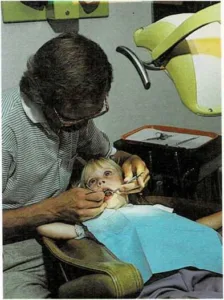Health and safety

For information on growth in height and weight during these years, see
[Growth] in For Special Consideration.
Dental care
During the preschool period, your child should visit the dentist.
Arrange with your dentist to take your preschooler with you on one of
your routine visits. Then, your child can sit in the dentist’s chair,
examine some of the dentist’s instruments, and become acquainted with
the dentist. This helps prepare for the child’s own first visit. (See
[Teeth and teething] in the Medical Guide.)
Accidents
Parents should be keenly aware that preschoolers are at great risk for
injuries. Specifically, accidental trauma is the leading cause of death
in preschool children. Motor vehicle accidents account for the greatest
number of these deaths, followed by drowning, fires, poisonings, and
gunshot wounds. A significant reduction in childhood injuries would do
more for the overall health of the preschool population than finding a
cure for all childhood cancer.
Parents have the vital role in preventing childhood injuries. Parents
must develop a thorough understanding of normal preschool development to
make the environment safe, and to change high-risk behavior in their
children.
Normal preschoolers have a lot of energy. They are developing new skills
such as throwing balls, climbing trees, riding tricycles, and running.
They often lack sufficient coordination. Simultaneously, their personali
ties are egocentric—they view the world through their own eyes. They
believe things won’t change unless they will it. Make-believe and
television become reality to preschoolers.
The best way to prevent injury to preschoolers is to provide a safe
environment. And the most effective means to do this is for parents to
identify what will make their children’s environment safe. Parents
should:
Buy and install smoke alarms and frequently check to ensure that they
are in working order;

Having the teeth checked by the dentist should be routine by the age
of 3.
Turn the water heater down to 120° to 130° F.;
Insist upon the use of automobile safety belts;
Lock up all poisons, have syrup of ipecac (used to induce vomiting after
poisoning) in the house, and post the poison control numbers near the
phone;
Lock all dangerous areas;
Make sure play surfaces are safe. (The safest surface for playground
equipment is sand, 10 inches deep. Packed earth is safer than asphalt.)
Modification of the child’s behavior can further reduce childhood
injuries. Teach your child how to recognize and react to

Preschoolers should learn to float and swim. Teach them yourself or
put them into a swimming class run by professional instructors.
dangerous situations and how to develop sound safety habits. It is
imperative that parents be good role models, that they practice good
safety habits, and that they be aware that preschoolers need constant
supervision, because children at this age don’t understand danger.
To change the preschooler’s behavior, parents must establish restraints
and enforce them. (These rules can be modified as the child matures.)
Here are some suggestions for safety for preschoolers.
As situations arise, parents should teach preschoolers about street and
traffic safety, “stranger danger,” animal safety, water safety, fire
safety, and playground safety.
Similarly, viewing television with preschoolers is an excellent way for
parents to teach safety to preschoolers by identifying and discussing
hazardous and unrealistic situations with them. Age-appropriate books
about safety are widely available and should be read to preschoolers.
Children can also be taken to safety programs that are sponsored by
community agencies such as the local police department, fire department,
or Red Cross.
Making preschoolers active members in “safety surveillance” will also
contribute to their learning about safety and reduce the risk of injury.
For example, children should be required to pick up toys after play and
store them in safe places. Children should accompany their parents on
periodic safety checks of the home so that they can observe how smoke
alarms work, how the house is made safer for younger brothers and
sisters, how play areas are checked for safety, and so on. Preschoolers
should also take part in family fire drills and be encouraged to ask
questions about things they don’t understand. Preschool children can be
given the responsibility for reminding others to “buckle up” when they
are in cars and for checking the street for cars before others are
allowed to cross.
Parents’ primary responsibility for the safety of preschoolers is
supervision. Parents should thoroughly investigate preschools and
day-care centers and then choose those that are safe and have reputable
care providers. (For additional information about day care, see [Day
care] in For Special Consideration.)

